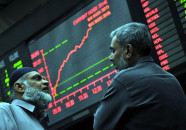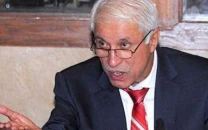Second straight C/A surplus recorded
Strong remittances and rising exports, including IT, drive $119m surplus

Pakistan's current account recorded a five-month high surplus of $119 million in September 2024, primarily driven by strong inflows of workers' remittances from overseas Pakistanis and an improvement in export earnings, including IT exports.
This marks the second consecutive month of a current account surplus, helping stabilise the rupee, bolster foreign exchange reserves, and enhance the country's capacity to pay for imports and meet foreign debt obligations on time.
According to data from the State Bank of Pakistan (SBP), the current account deficit for the first quarter (July-September) of fiscal year 2024-25 dropped by 92% to just $98 million, compared to $1.24 billion in the same quarter last year. On a month-on-month basis, the surplus surged threefold to $119 million in September, compared to $29 million in August 2024.
Speaking to The Express Tribune, Arif Habib Limited's Head of Research, Tahir Abbas, said, "The robust inflows of workers' remittances played a key role in achieving the current account surplus for the second consecutive month in September."
Additionally, the trade deficit in services improved by 37%, reaching $226 million in September, further supporting the surplus, compared to $358 million in the same month last fiscal year.
Notably, workers' remittances surged by 29% to $2.85 billion in September, compared to $2.21 billion in the same month last year. Meanwhile, the export of goods increased by 19% to $2.65 billion, compared to $2.44 billion in the corresponding month last year.
Khurram Schehzad, CEO of ABC, remarked that the ongoing improvements in the external account are "de-risking the macroeconomic outlook," which will boost investor confidence. "We need to continue with structural reforms and make the environment more investor-friendly by reducing the cost of doing business and pushing for ease of doing business," he added.
Abbas further noted that the government's strategy to limit monthly imports to the sum of workers' remittances and export earnings would help keep imports in check and maintain the current account balance moving forward. He projected that workers' remittances would stay strong at around $3 billion per month in FY25, up from an average of $2.5 billion per month in FY24, which would help maintain the current account at a breakeven level in the coming months.
Looking ahead, he explained that it remains to be seen how imports will evolve as the government plans to expand the domestic economy. However, with global commodity prices remaining low, the volume of imports in US dollar terms is not expected to grow significantly, keeping imports stable.
He added that international petroleum prices are projected to average between $65 and $70 per barrel in FY25, which is affordable for Pakistan, but prices above $90 per barrel could pose a challenge. The energy sector accounts for 20-25% of the country's monthly import bill.
Abbas anticipates that the current account deficit for FY25 will range between 0.5% and 0.7% of GDP ($1.5 to $1.8 billion), compared to 0.2% in FY24. Earlier, the State Bank of Pakistan had projected the full-year current account deficit to be between 0% and 1% of GDP (up to $375 million).
FDI surge
Foreign direct investment (FDI) in sectors such as energy, finance, and telecom surged by 81% to $385 million in September, compared to $213 million in the same month last year. According to available data, this is the highest net FDI inflow in at least three years, indicating rising investor confidence in Pakistan.
FDI inflows for the first quarter of FY25 increased by 48% to $771 million, compared to $520 million in the same period last year. China remained the top investor, injecting $404 million in the first quarter of FY25, followed by Hong Kong with $99 million.
Other key investors included the United Kingdom, the Netherlands, Switzerland, and the United Arab Emirates. The power sector attracted the largest share of investment, with $416 million, followed by the financial sector with $127 million. Additional sectors, including oil and gas exploration, electronics, chemicals, and trade, also received significant foreign investments in the quarter.



















COMMENTS
Comments are moderated and generally will be posted if they are on-topic and not abusive.
For more information, please see our Comments FAQ